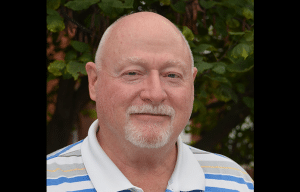Pioneers of the Illinois Frontier, part III
by Deborah Heal
James and Isabelle Garretson and the other families had come to the Illinois Country in 1782, thinking that with the Revolutionary War over, they were fairly safe from Indian attack. And indeed there were only a few incidents of hostility at first.
But the settlers had no way of knowing that a coalition of thirty-five Indian tribes had formed with the express purpose of driving them out of the region. Furthermore, back east, the war had bankrupted the states, and Virginia, (which had jurisdiction over the Illinois Country because of George Rogers Clark’s victory) decided it couldn’t afford to keep General Clark at Fort Vincennes where he was protecting the territory he had won for America. Clark warned them that because of Virginia’s show of weakness, the Indians had taken up arms for Britain and that the “Vincennes garrison and the entire Illinois country would be lost unless Virginia or the United States initiated an offensive against the Indians.” (Baldwin)
Clark’s pleas for military support went unheeded, and the defense of the Illinois Country was left to the pioneers who had settled there. And although the Treaty of Paris had made arming the Indians and paying bounties for scalps illegal, the British military continued to do so covertly, using British traders as their agents.
In 1786, the first Indian war party swept down out of the north to rain death and destruction on the white settlers. The war lasted thirteen years, ending with the Treaty of Fallen Timbers. Baldwin says that during that time, “Ten percent of the settlers were killed. Others were captured and carried into captivity. Few families escaped having someone among the casualties.”
And James Garretson’s family had more than its share of suffering. In December 1788 they were attacked two different times in their hayfield. (If you’re wondering like I did why they were working in their hayfield in December, visit my website to learn about early American hay-making, including cool photos.)
In the first attack James Garretson and a young neighbor helping him were wounded. In the second attack, Garretson’s sixteen-year-old son Samuel was scalped. I’m nervous saying that out loud, because it contradicts what John Reynold’s authoritative history of Illinois says about the incident.
The historical records about the Garretsons were so ambiguous and at times outright contradictory that I kept wishing I had the use of Professor Randall’s time-rewinding software to clear things up. First, I wasn’t even sure what the correct spelling of their surname was. When James’ friend Shadrach Bond bequeathed property to him, it was to James Garrison, and that did become the established spelling in later years. But the family tree listed on Genealogy.com has it as Garretson. My theory is that the name devolved from the original Garretson into the more familiar sounding word, Garrison.
But the confusion over the name was just the beginning. Another error perpetuated through the years originated when a historian mistakenly combined the lives of the two James Garretsons—senior and junior, which led to confusion about which James was injured in the first Indian attack. On the Garretson family genealogy boards there is much discussion of this.
But the scalping incident that happened a few days after the first attack was even more confusing. Governor Reynolds and Carl Baldwin claim that James Garretson senior’s brother Samuel came along with the five original families who settled at Bellefontaine, and that it was this Samuel who was killed and scalped by Indians in the hay field.
No disrespect, Gov. Reynolds and Mr. Baldwin, but I think you’re wrong. The problem arises because James Garrison had both a brother and a son named Samuel. (People, have pity on researchers. Come up with original names for your children!) But according to the Garretson family tree posted on Ancestry.com, James senior’s’ brother Samuel, never left Pennsylvania. He died August 21, 1822 and is buried in Newberry, Pennsylvania.
So I concluded that the Samuel Garretson scalped by the Indians was James and Isabelle’s son. It was a bad time for the Garretsons, to be sure. And that wasn’t even counting what had happened two years previously to Mary and Jane Garretson. According to Carl Baldwin:
In 1786 Indians kidnapped two small children of Mr. and Mrs. Samuel Garrison. The youngsters were taken to the upper reaches of the Sangamon River in central Illinois. Scraps of information about this event tell us only that the kidnap victims were returned to the Garrisons a year later through the intercession of Nicholas Jarrot, Cahokia’s prosperous Indian Trader.
But he’s wrong about that, because the only Samuel Garretson in the Illinois Country settlement was Mary and Jane’s brother, not their father. So it was James and Isabelle’s daughters who were kidnapped! I thought about including this kidnap story in Once Again, but figured readers wouldn’t believe one family could suffer so much hardship.
I thought the Garretsons’ story should be remembered, and so I focused on it in my novel Once Again: an inspirational novel of history, mystery & romance. But their story is only representative of all brave pioneer families of the Illinois Country. I’ll be telling the story of the Piggots one day soon.
[Editor’s Note: Heal’s historical novels are available on Amazon.com in paperback and Kindle. Learn more the history behind the books on her website: www.deborahheal.com]







